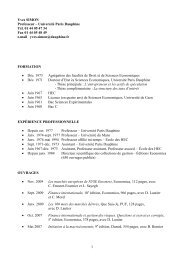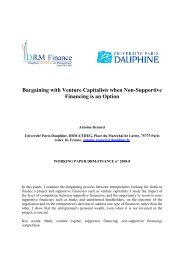Souad AJILI - CEREG - Université Paris-Dauphine
Souad AJILI - CEREG - Université Paris-Dauphine
Souad AJILI - CEREG - Université Paris-Dauphine
Create successful ePaper yourself
Turn your PDF publications into a flip-book with our unique Google optimized e-Paper software.
The Cross-Section Returns in France: Characteristics or Covariances<br />
stocks to group NYSE, Amex and NASDAQ stocks, we use the breakpoints of<br />
the whole sample (Premier Marché, Second Marché and Nouveau Marché)to<br />
make our classification. Like Fama and French, we do not use negative book<br />
to market firms.<br />
Table 2.<br />
Book to market ratio classification<br />
Stocks are classified into three groups of book to market ratio: high (H ), medium (M ) and low (L). In<br />
this table, we show the number (Nbr) of shifting from one group of book to market to another for all<br />
stocks of the sample.<br />
The sample<br />
Nbr. 0 1 2 3 4 and Total<br />
more<br />
Stocks 93 63 44 18 56 274<br />
Pourcentage 33.94 22.99 16.06 6.57 20.44 100.00<br />
We can ask about the significance of book to market classification Indeed,<br />
a low book to market ratio characterize firms with high market value<br />
relative to book value. This is the case of firms with high growth investment<br />
opportunities. Another possible explanation is the existence of intangible<br />
assets, like investments in R&D. We mention also the case of firms with low<br />
risk with can be expressed in a high market value. Nevertheless, the understanding<br />
of the book to market ratio must be made in a context of three<br />
dimensions: the life-cycle of the firm, the sector and the stock market.<br />
Table 2 shows the number of shifts in the book to market classification<br />
for all the stocks. One third of stocks doesn’t change their book to market<br />
classification. These stocks are grouped in the same proportions between<br />
the three groups H, M and L. Indeed, 42% of 93 stocks are in the group<br />
L, 38% in H and 20% in M. Stocks with one shift in the book to market<br />
classification, which represent 23% of the total sample, are stocks around<br />
breakpoints. Only 5% of stocks change from low to high book to market<br />
ratio and vise versa.<br />
The same observation can be made for stocks with two shifts in the book<br />
to market classification. Indeed, the majority of stocks change their book<br />
to market group around breakpoints. 30% (11%) of stocks move from low<br />
ratio (medium) to medium (low) then to low (medium). In the case of the<br />
breakpoint between high and medium book to market ratio, 20% and 18%<br />
of stocks are concerned.<br />
(2) A classification of size: The stocks are grouped in two classes; the stocks<br />
of small capitalizations and the stocks of big capitalizations. We consider<br />
7



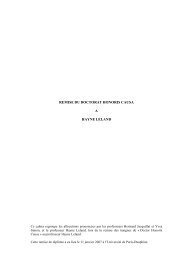

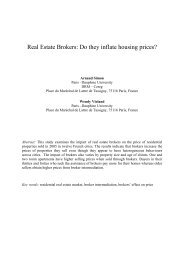
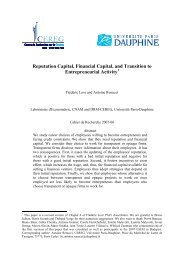

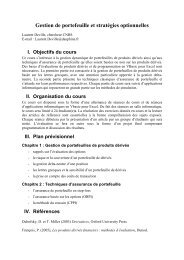

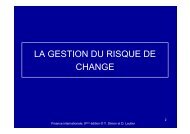
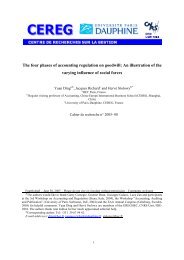
![& 6 ] ^ F ]^ - CEREG - Université Paris-Dauphine](https://img.yumpu.com/33326502/1/184x260/-6-f-cereg-universitac-paris-dauphine.jpg?quality=85)

